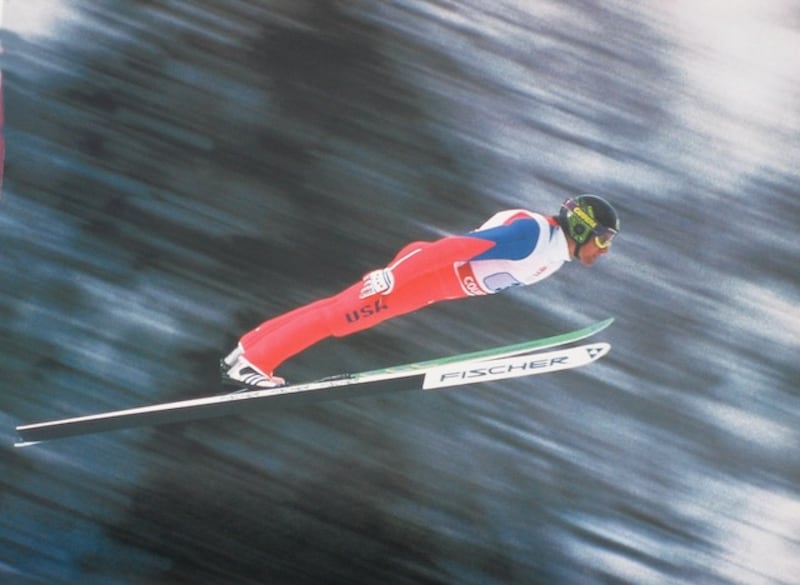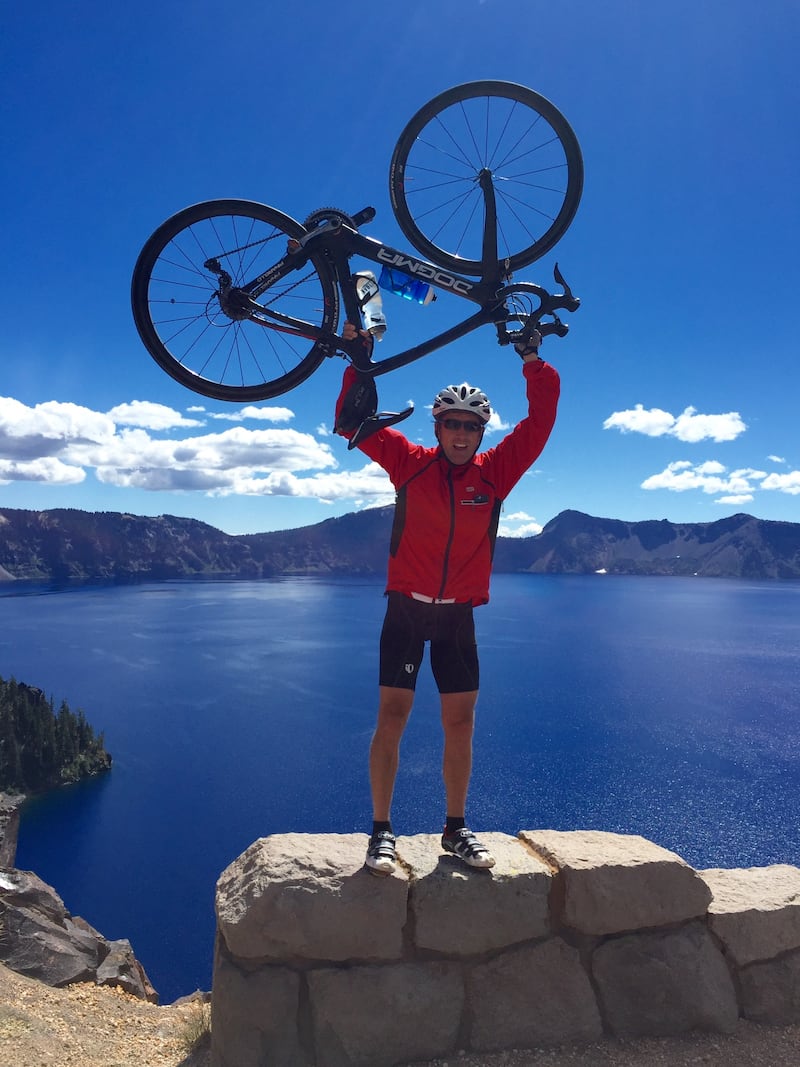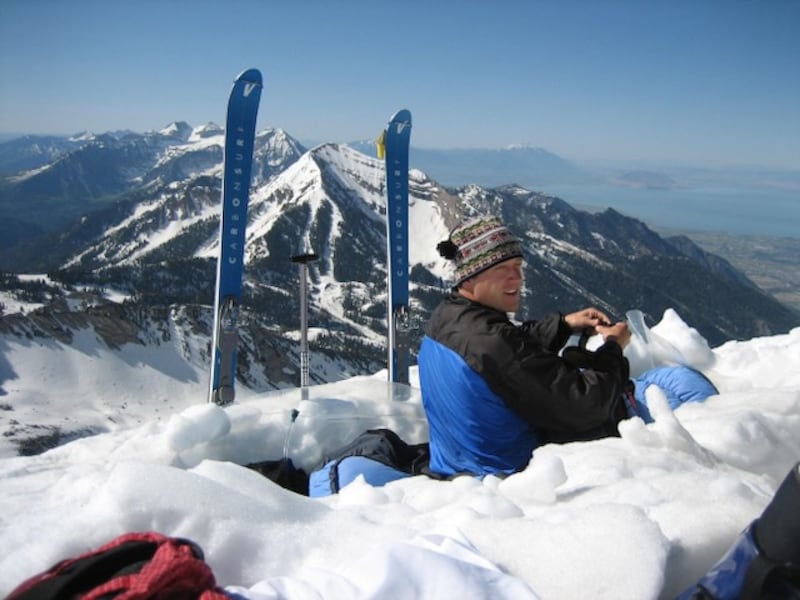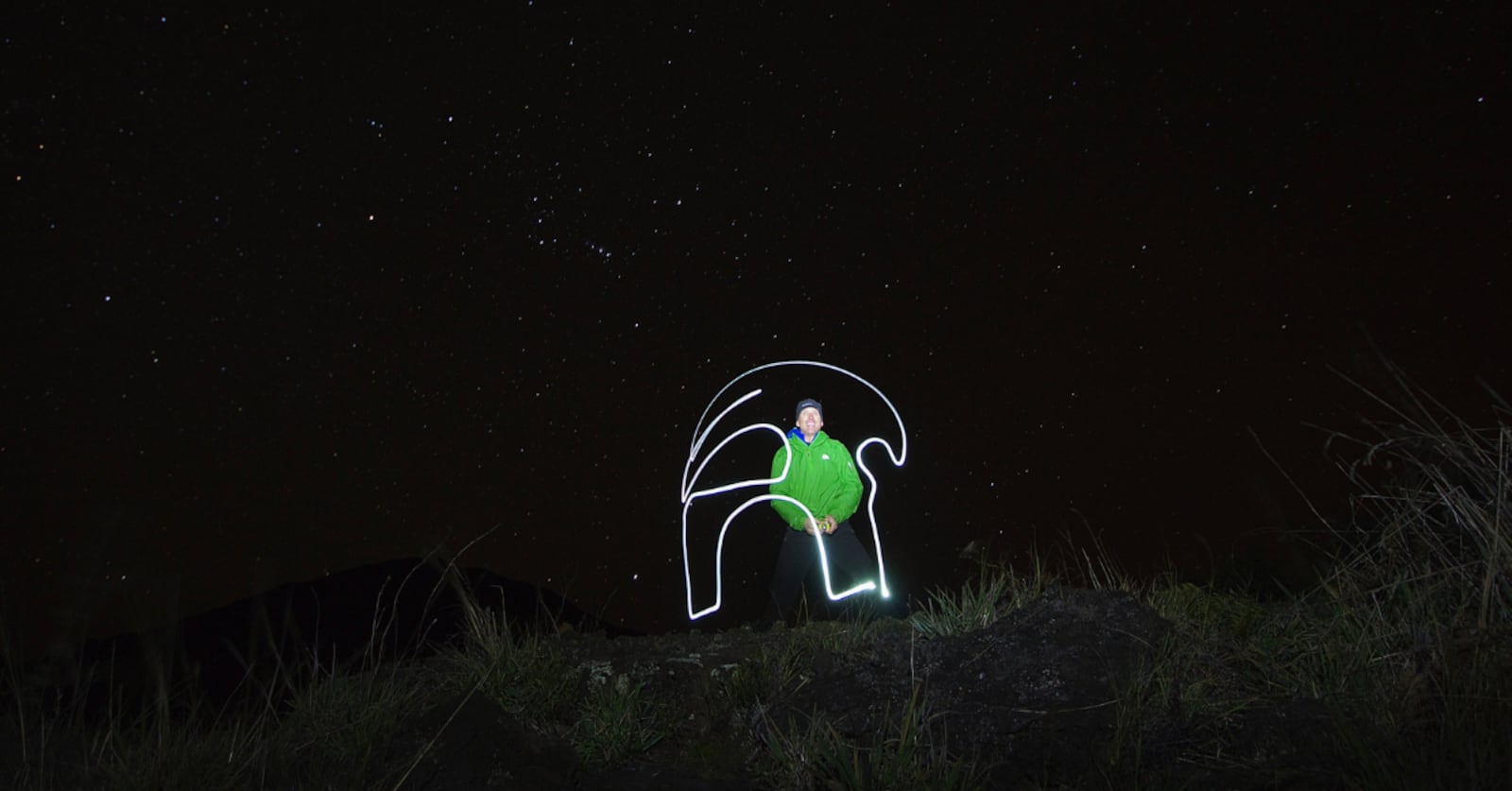Iwas tremendously fortunate to grow up in Norwich, Vermont, a quiet New England town across the river from Dartmouth College that has produced an astounding number of Olympians. An author named Karen Crouse wrote a book about Norwich in which she tried to crack the nut and understand the phenomenon. I think it was due to the close-knit, supportive culture and strong Protestant work ethic. When you see your neighbor accomplish something, it breaks a barrier. It opens you up to the idea that you could do it, too.
There’s no question that I gained a lot of momentum from my childhood. I participated in an after-school ski program that allowed me to choose between cross-country skiing, alpine skiing and ski jumping (ski jumping was far and away the most fun). My dad went to Dartmouth’s Tuck School of Business and was an entrepreneur, which opened my eyes to the possibility of following that path. He was a CPA and became the treasurer of a small electrical wire and cable distributor. He grew the company while he became involved in real estate, buying and restoring some historic buildings in the center of town and reviving it into a thriving epicenter.
My father encouraged me to work in the family business, but I wanted to be original and do something different. Not surprisingly, I wasn’t that enthused about selling fire alarm control cable. My father always advised me that if I was going to start a business, I should avoid what he referred to as “sexy categories”—businesses with a lot of allure that also come with lots of competition. Of course, I ignored his advice and did exactly the opposite.
From the world stage to the real world
While training and competing in ski jumping around the world, I concurrently attended the University of Vermont on “the 10-year plan,” obtaining an all-important degree in political science. I also decided I wanted to learn about the internet and proposed my own internship, during which I did research for Merrell and Tubbs Snowshoe and devised a plan for each company to create a presence online. I got a phonebook-size instruction manual on HTML and focused hard on learning about it.
I spent some time training in Park City in the summer of 1993 prior to the Winter Games in Lillehammer and always swore I would find a way back to the area’s blue sky and mountains. After graduating from college and retiring from ski jumping in my mid-20s, I packed up my car with my windsurfing gear, skis and mountain bike and road-tripped out to Park City. I remember feeling liberation as I made my way toward the Rocky Mountains. Winging it and carving my own path felt exhilarating. political science and was altogether unsure of what I was qualified to do. In Park City, I started building websites for realtors and doctors. I was painting houses at the same time, and while I did, I listened to books on business management—Jack Welch, Dale Carnegie—trying to learn whatever I could while I was painting.

Fishing for our first order
I met my late co-founder, John Bresee, in sixth grade. He also headed west in search of deep powder. We resembled the odd couple: I was left-brained, he was right-brained. I was good with people, made sure we didn’t implode financially, generally covered the operations side of the business and was good at making things run efficiently. John was surrounded by a swirling pile of papers, couldn’t balance a check book to save his life, and was sometimes a little hard on people. But amid the whirlwind that bordered on chaos, he brought incredibly refreshing and creative ideas, good humor, energy and well-timed innovations. We complimented each other well.
With another friend from Vermont, John created one of those free newspapers you’d see at coffee shops called the Wasatch Canyon Reporter. It didn’t make any money, but they worked hard at it. The content was flippant and funny—they had a mock horoscope that would talk about “the snow density in your future” and such. Through the newspaper, we acquired media passes for the Outdoor Retailer (OR) trade show to scope out new gear.
In 1996, John had the idea that we should try selling avalanche gear online and leverage the “traffic” through the Wasatch Canyon Reporter website (the amount of traffic was never clarified). Truth be told, we built that website the night before the trade show. We brought a laptop along and pitched our idea to a handful of vendors. More than a dozen declined. But as we pitched it to them, we gradually improved our speech and our own conviction. Eventually, Sandy Brown—a vendor for Life-Link and PIEPS—said, “Alright, just as long as you’re not cutting deals to your buddies.” We were like, “Really? OK!” And off we went.
Our first online order came in the form of an avalanche beacon and the customer’s credit card was declined. She mailed us a check instead, which fortuitously bought us some time since we didn’t have a single piece of inventory in stock. We expedited a beacon from PIEPS to our headquarters (our condo) and from HQ to the customer. That’s how things began: we ate into the margin with shipping costs but tested the business model cautiously. Over the course of several more weeks and after we had sold a couple of beacons, we dared to add one to inventory. We invested $2,000 into the business, a line I ultimately wove into our investment bank roadshow: “We put $2,000 into it, and we expect to get that back!” It always got a laugh.
An avalanche of success
In 1998, we opened a retail store in Heber, Utah. The space had been a mechanic’s garage at some point, and we traded telemark ski boots with a friend/carpenter in exchange for a sheetrock wall. We made a small, L-shaped retail store, a tiny space for packing boxes and a tiny office. Before the internet bubble burst, Silicon Valley-based competitors like Planet Outdoors were funded with millions of dollars and had plush office furniture and fountains in the lobby. Meanwhile, we were literally beating the dust off of dingy carpet from the side of the road and cutting it with an X-acto knife to carpet our office. Around the same time, the U.S. Ski Team renovated its headquarters and got rid of a bunch of mismatched desks, which we made ours. I infamously turned off the hot water to save a few bucks. I did things on the cheap, spending our positive cash flow on important, customer-facing things like fast servers. gained momentum slowly at first, then accelerated at a hair-raising rate. I remember our first big warehouse—27,000 square feet on California Avenue in West Salt Lake—and the gravity of that lease. I remember putting up a volleyball net in the empty half of the warehouse and having a company party. While everybody was having fun, I was sweating it out a bit, thinking, “I hope we can fill up this warehouse!”

Of course, we did. We managed to stay one step ahead of our accounts payable and expanded into a 50,000-square-foot space, then a 100,000-square-foot space. We had caught lightning in a bottle.
As we gained traction, I realized I had a lot more in my pocket than a political science degree. The lessons learned from aspiring to be the best I could be at a sport (and the lessons in humility and getting back up after crashing hard) proved invaluable in starting a business. Being thrown in a van with a bunch of kids who have nothing in common other than the ability to ski jump taught me how to communicate, interact with and value people who think differently than me. I came to recognize that the formula for success in athletics is very similar, if not the same, as the formula for success in business: focus + persistence + a positive attitude/outlook.
In 2007, a banker approached us, and we realized our American dream could be a reality. John and I sold the majority of Backcountry to Liberty Media Corporation but maintained a meaningful stake. Today, Backcountry has a great reputation in the outdoor industry for representing the vendors we sell well, and we’re gaining traction on Backcountry-branded products. I’m on the board and remain involved in the direction of the company at a high level.
A different kind of mountain to climb
For years, I felt that I was superhuman. I demanded many things from my body, and it always responded. I skied big lines in Alaska, British Columbia and the Wasatch. I snowboarded, kite-surfed big waves, climbed, mountain biked and recreated my ass off. In 2014, I was diagnosed with Parkinson’s and life took a 180. As I sit here, my muscles are tense and my hands tremble. My wife types up a few edits as I dictate. I struggle to button a shirt, take a lid off a jar or tackle any task that requires finger dexterity or rapid movement. While I’ve crossed a few activities off my list (for now), I am fortunate that I can still hike, bike, ski and enjoy the outdoors.
Although riddled with challenges, there’s a silver lining in this predicament. Back when I was “superhuman,” I had no idea the extent to which countless people are sucking it up. I’d see people in the corner of a Starbucks clearly struggling with a health condition, and I couldn’t relate to them. Now, I get it, and I’m inspired to help people and make an impact.
I’ve engaged with scientists around the planet, turning over stones and exploring solutions to degenerative diseases, which, interestingly, dovetail into our understanding of aging itself. Because Parkinson’s is an age-related disease, the emerging solutions are aimed at regenerating the body and brain. I’ve been fortunate to find myself at the table with some brilliant people. I think scientists are rock stars. In another lifetime, I might have been one. I aim to help solve this puzzle—and I will, just wait.
Prioritizing powder days
From aspiring to be the best ski jumper in the world, I learned a lot about perseverance. I also learned many lessons that directly apply to business. I learned the importance of trying to be the best at what you do and not settling for mediocrity. I learned that there’s always a better way.
More than anything else, I co-founded Backcountry because I wanted to want to go to work in the morning. I was excited about combining my interests in technology and the internet with my passion for gear and the outdoors. I wanted to find my own answers to questions like: How do you get traction with a business to begin with? How do you create an environment where everybody pulls on the rope in the same direction? How do you create an environment where people are laughing in the office? John and I were always allergic to corporate culture, fluorescent lights and cubicles.
Back to my dad’s recommendation to go into business selling eyelets for boots, card tables or something else mundane in which there’s less competition—the category I ended up in is indeed competitive, but it comes with that “I want to go to work in the morning” component. I wanted to ski on powder days. People that are inspired to work at Backcountry tend to be fun, passionate and energized. Like me, they find it satisfying to play a role in enabling outdoor adventure. We live vicariously through our customers and the stories they share. There’s nothing like hearing from a customer who has mustered the courage to jump into a frigid high-altitude lake, ski a 40° pitch with 15 inches of down feathers, or see a photo of them on the summit of a sought-after peak, arms raised high in the air.


